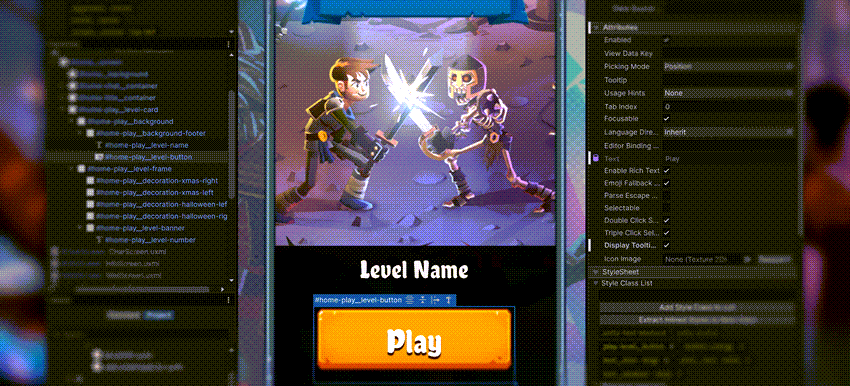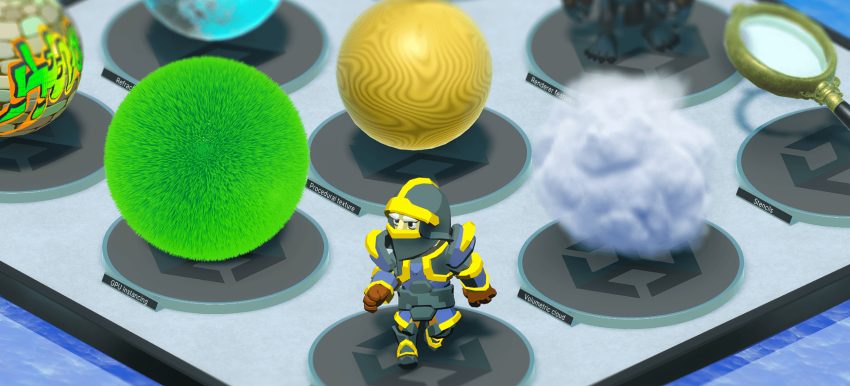Best practice guides
Use this page to discover and learn production-tested best practices from Unity experts. The Technical Content Marketing team at Unity created the guides listed on this page together with industry experts, and engineers and technical artists from Unity R&D and the Accelerate Games Solutions teams.
Art and design

Create virtual and mixed reality experiences in Unity
Read this e-book to get practical tips for working with the VRVirtual Reality More info
See in Glossary template in Unity, the XRAn umbrella term encompassing Virtual Reality (VR), Augmented Reality (AR) and Mixed Reality (MR) applications. Devices supporting these forms of interactive applications can be referred to as XR devices. More info
See in Glossary Interaction Toolkit, Apple Vision Pro and visionOS, and more.

The definitive guide to animation in Unity
This guide aims to provide animators and technical artists with an in-depth understanding of the animation features in Unity. Learn about importing and exporting animations, humanoid animationsAn animation using humanoid skeletons. Humanoid models generally have the same basic structure, representing the major articulate parts of the body, head and limbs. This makes it easy to map animations from one humanoid skeleton to another, allowing retargeting and inverse kinematics. More info
See in Glossary, shortcuts, animating UI, events, and more.

2D game art, animation, and lighting for artists
Authored by the art director of the Unity 2D demo Dragon Crashers and with contributions from Unity 2D experts, this guide shows how to set up your 2D project, switch between Unity and Autodesk, work with spritesA 2D graphic objects. If you are used to working in 3D, Sprites are essentially just standard textures but there are special techniques for combining and managing sprite textures for efficiency and convenience during development. More info
See in Glossary, sort layers, and more.

The Unity Game Designer Playbook
This guide is designed to help experienced game designers learn how to prototype their ideas in Unity for more efficient creation and team collaboration. Learn about visual scripting, creating input, level design tools, microinteractions, and more.

UI Toolkit for advanced Unity developers
This guide for UI artists, UI designers, and UI programmers illustrates many features-in-action with examples from two official Unity UI Toolkit samples. Each section in the e-book focuses on specific toolsets, making it easy to choose the most relevant parts for your role.

Introduction to game level design
Written by professional level designers in the gaming industry and Unity product experts, this guide provides career tips and instructions on using Unity tools suited to worldbuilding, such as Unity ProBuilder and the TerrainThe landscape in your scene. A Terrain GameObject adds a large flat plane to your scene and you can use the Terrain’s Inspector window to create a detailed landscape. More info
See in Glossary system.
DevOps

Best practices for project organization and version control
This guide explains the key concepts of version controlA system for managing file changes. You can use Unity in conjunction with most common version control tools, including Perforce, Git, Mercurial and PlasticSCM. More info
See in Glossary, compares some of the different version control systems available, and provides an introduction to additional Unity DevOps tools like Unity Asset Manager and Build AutomationA continuous integration service for Unity projects that automates the process of creating builds on Unity’s servers. More info
See in Glossary.
Graphics & rendering

Create popular shaders and visual effects with the Universal Render Pipeline
This e-book covers the creation of versatile shaders and visual effects with URP in Unity 6. You’ll find steps for creating a toon and outline shaderA program that runs on the GPU. More info
See in Glossary with Shader Graph, creating X-ray-like image effects with stencils, and more.

Introduction to the Universal Render Pipeline for advanced Unity creators
Get in-depth guidance on how to set up URP for a new project, work with URP Quality Settings, Adaptive Probe Volumes, URP and custom shaders, HLSL includes, and more.

The definitive guide to creating advanced visual effects in Unity
Use this comprehensive guide to learn how to incorporate the VFX Graph into your applications. It includes specific instructions on how to use the VFX Graph, and its related tools, to build real-time visual effects in Unity 6.
Performance optimization

Optimize your game performance for mobile, XR, and Web in Unity
This guide brings together all the best and latest mobile, XR, and Unity Web performance optimization tips for Unity 6.

Optimize your game performance for consoles and PCs in Unity
This guide brings together all the best and latest PC and console performance optimization tips available in Unity 6.

Ultimate guide to profiling Unity games
This guide provides advanced knowledge and advice on how to profile an application in Unity, manage its memory, and optimize its power consumption from start to finish. Learn best practices for a profiling workflow and using Unity’s profiling tools.

The Unity game dev field guide
This guide helps you get familiar with the latest Unity features and workflows. It covers Editor navigation, setting up your development environment, Unity’s profiling tools, physics, and Input Systems.
Scripting

Use a C# style guide for clean and scalable game code
Read this guide to learn how to use and adapt existing industry standard code style guides. It explores the benefits of following consistent naming conventions, formatting, commenting on code, and more.

The ultimate guide to multiplayer networking for advanced Unity developers
Read this guide to explore the core concepts of Unity multiplayer, different multiplayer systems and networkingThe Unity system that enables multiplayer gaming across a computer network. More info
See in Glossary models, and an example of using Netcode for GameObjectsThe fundamental object in Unity scenes, which can represent characters, props, scenery, cameras, waypoints, and more. A GameObject’s functionality is defined by the Components attached to it. More info
See in Glossary.

Introduction to DOTS for advanced Unity developers
Read this guide to better understand data-oriented programming and evaluate if DOTS is the right choice for your next project.

Create modular game architecture in Unity with ScriptableObjects
This guide provides tips from professional developers on leveraging ScriptableObjects in your Unity projects. Download the accompanying demo project from GitHub, inspired by classic arcade game mechanics, to follow along.

Level up your code with game programming patterns
This guide covers SOLID principles and provides examples of how to implement well-known design patterns for game development, including Factory, Singleton, Command, State, and Observer Pattern, Object Pooling, and Model View Presenter (MVP).

Level up your code with design patterns and SOLID
This updated e-book includes an expanded section on implementing SOLID principles and a sample project containing actionable code examples for 11 programming patterns.